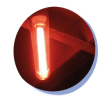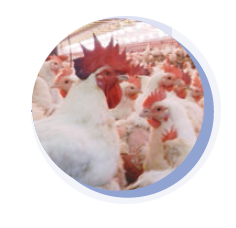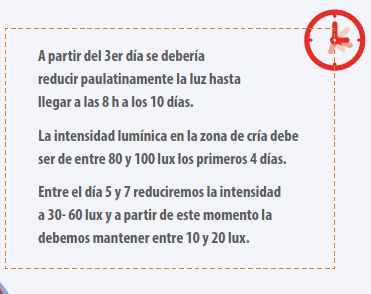RECOMMENDED

Managing flocks with the aim of providing optimum well-being is important if we want to achieve good technical and economic results in breeding farms.
The first indicator that can alert us to abnormal behavior is the "suction movement". The birds stretch and retract their heads towards the tail of other individuals as if they're about to lick it with their beaks but without touching the feathers.

during pecking, birds damage their tail and back feathers and consequently the plumage degrades rapidly.
Behavioral problems can be triggered throughout the life of the birds but on many occasions they appear during the rearing phase and are manifested especially at the beginning of production.

The manufacturer must give us instructions on the number of light units necessary, depending on the size of the warehouse, to achieve a homogeneous intensity on the surface of the whole installation.
As a general rule, warm lights, with more red component, are more beneficial to keep birds calm than white lights.
During the rearing period, the light must be perfectly adjustable. Turning off lines or eliminating light spots to reduce intensity must be avoided; it will always provoke areas with more intensity where the birds can initiate pecking behaviors.

By slowly decreasing and increasing the intensity, the activity of the birds gradually decreases and increases without causing nervousness.
LEDs are preferable to fluorescent LEDs as long as the system is able to drop from 100 to 0 lux evenly without causing sudden drops in intensity.
If fluorescent lights are used they should be checked periodically to eliminate those that flicker and that can stress the birds.
Fluorescent flickering is hardly detectable to the human eye when they work at their maximum intensity; in order to check them, their intensity must be lowered and if they are defective there will come a point where we should notice their blinking.
During the rearing period, light hours and their intensity must be adapted to the different needs of the birds.
After accommodation, the requirements in hours and intensity are high, since we must facilitate the location of the water and feed. Later, when the birds are already rationed and therefore more stressed it is necessary to decrease the hours and intensity of the light. Regardless of the type of house that is used, during the first two days after accommodation, birds should receive 23 hours of light and one hour of darkness. This will help promote feeding activity.

When the feed distribution system is aerial, we should feed the birds with a maximum intensity of 30 lux. It will allow them to find the granules, consume the feed more slowly and therefore reduce their stress level. It is also useful to completely turn off the light during the first 15 seconds of distribution of the feed. This way, when the lighting is switched on again, the birds know that they already have feed on the litter and there is no "sudden bursts" of activity.
Subscribe now to the poultry technical magazine